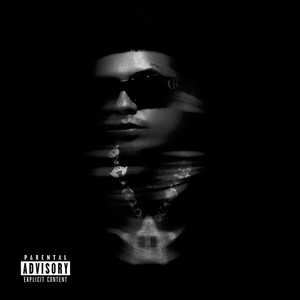Student explores the specs of Google Glass
It’s a blustery winter afternoon when Ziyad Al Obaidi walks into the Oakland Center. Shaking his coat free of snow, he taps the slender, metallic side of his lens-less
glasses. “Okay, Glass,” he says.
Al Obaidi is a pioneer of sorts in this new, wearable technology. As a member of the Google Glass Explorers team, he wears the device throughout his day, learning to use the system and offering feedback to the company on the glitches he finds while suggesting new applications that he would find useful.
“It’s a selective program,” the junior said. “I applied to be an Explorer at the Detroit convention in November, and after they approved my application, they only gave me a week to accept the offer. I’m very lucky to be given this opportunity.”
At $1,500, Al Obaidi, a computer engineering and electrical engineering double major, agreed that while currently the device is still not at an affordable price for everyone, the novelty of the Glass was worth it to him.
“I love technology and I think that the Google Glass is ahead of the curve in so many ways,” he said. “As a software engineer, I feel that I can help to improve Glass before it becomes available to everyone in the public.”
The Google Glass, boasting a “feather-light titanium frame,” according to its website, looks, in layman’s terms, like a pair of sport sunglasses missing their lenses. With a wiry frame and a slightly thicker piece (the housing body for the Glass computer) over the right temple, the screen of the device manifests itself in a small, opaque prism on the glasses’ right side.
Al Obaidi said that the screen was small enough not to impede with his day. “I sometimes take it off when I am at home, but I wear it almost all the time otherwise. I wear it when I’m driving and at work and when I’m in class. On one of my final exams last semester, my professor had to add ‘no Google Glass’ to the list of policies,” he said, smiling.
“Essentially, [Glass] functions much like a hands-free smart phone,” Al Obaidi said. “Right now you can do all the standard stuff like making calls and taking pictures and checking your email, but with special apps, the possibilities begin to grow.”
Al Obaidi demonstrated the power of one app in particular that Glass could have to someone in a foreign country with its translation feature. After giving the device a quick verbal cue—“Okay, Glass, translate this”—he focused its camera on the English text of a newspaper before him, the English words rapidly morphing into Spanish ones before his technology-covered eyes.
“Glass is just starting, but it already has huge potential,” the Sterling Heights resident said. “For instance, as of now, Glass has been implemented within the health industry where doctors and physicians can use it as a telehealth communication device with the help of Pristine, a new start-up focused on building Glassware for Glass.”
As a Google Glass Explorer, part of Al Obaidi’s job is to share the prototype with his community. Inspired by the digital childhoods of Apple founder Steve Jobs and Google founder Larry Page, Al Obaidi wants to bring Google Glass into elementary schools to give kids a look at the device.
“If you look at Steve Jobs and Larry Page, they both grew up around computers, which was very unique in the eighties. I think exposing children to the possibilities of advanced technology opens their minds and sparks creativity,” he said.
Currently, Al Obaidi is scheduled to host a Glass exploration event in the Honors College on Wednesday, February 19 from 1-2:30 p.m. He is also scheduled to hold an event with CyberOU on March 20. For more information on these events, you can visit Al Obaidi’s personal webpage at ziyalobaidi.com.
Al Obaidi says that he is hopeful about the future prospects of Google Glass.
“In my opinion, just like when Apple introduced the iPhone to usher the mobile era, Glass from Google is here to usher the new era of wearables.”







